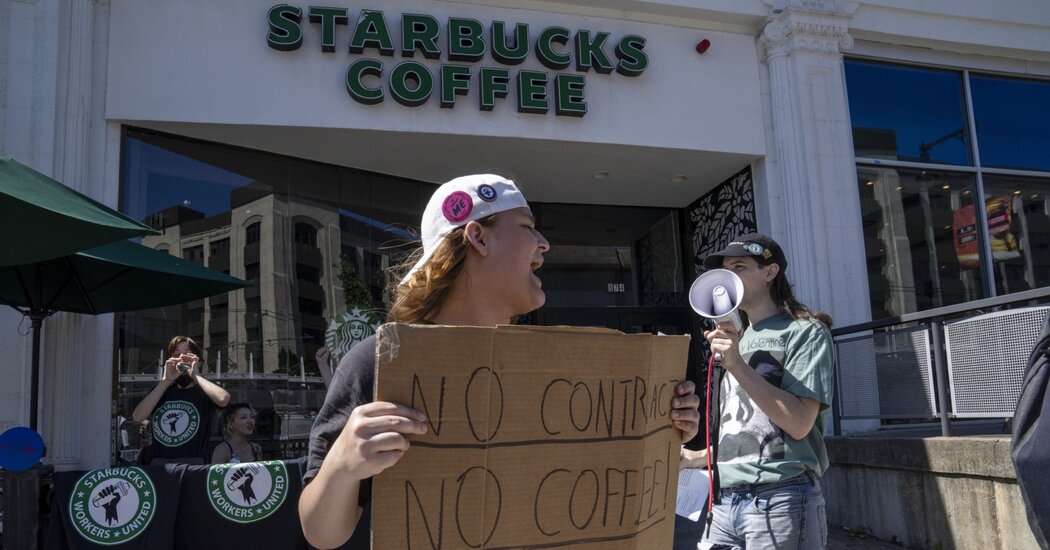
“Massing forces in a particular geographic region and attempting to spread the conflagration there has the potential to work,” said Peter Olney, a former organizing director of the International Longshore and Warehouse Union. “I would focus on those metro areas.”
One architect of the union’s strategy in Boston is a recent law school graduate named Kylah Clay, who works as a barista at a unionized store.
On a blistering afternoon in August, Ms. Clay, wearing a tank top and green army pants, sat outside the Boston University store holding a stack of checks that workers came to collect, courtesy of the union’s Starbucks strike fund.
In between, she recalled how she and a colleague had recently ambushed their district manager at another store after he had become slow to respond to their calls and text messages. “We went up to the district manager and started making our demands,” Ms. Clay said.
As Ms. Clay tells it, she knew almost nothing about unions before last year, when company officials began pouring into Buffalo after the campaign had gone public. Among them was Howard Schultz, who was between tours as chief executive. “When Buffalo filed, Howard should have kept his mouth shut,” she said. “I would have never gotten involved.”
Employees at her store, where she had first worked during law school, and another Boston-area store filed for union elections in December and won their votes in April. Since then, more than 15 stores in New England have also unionized, most of them with her help. Nationwide, the union has won about 250 out of just over 300 votes.
But adding to the total has become more difficult. “Stores that are easy to organize, that had people in them who were natural leaders, who were excited about it — those have filed already,” said Brick Zurek, a former Starbucks employee in Chicago who helped organize workers there.